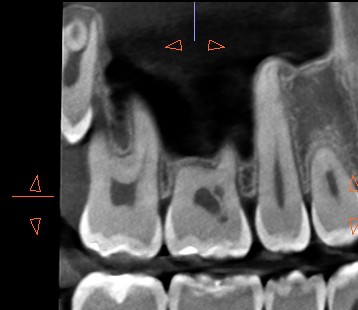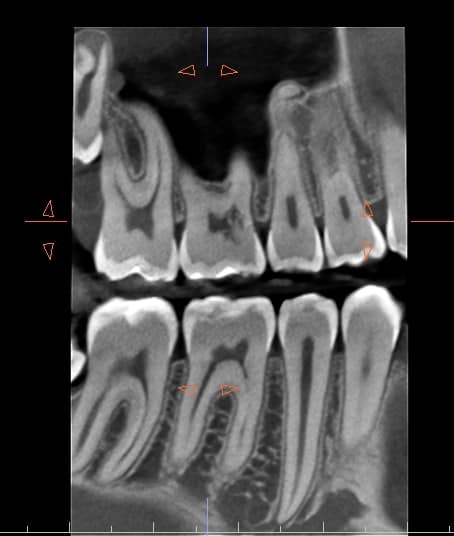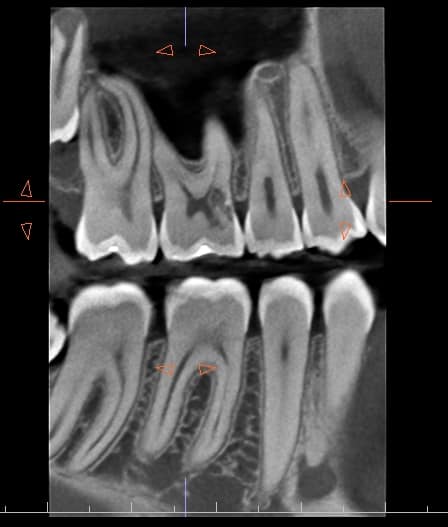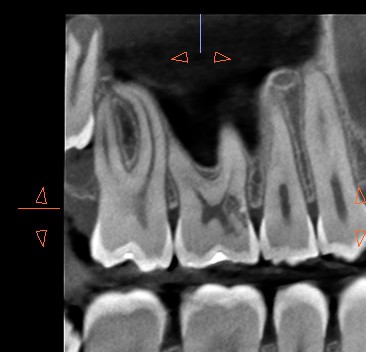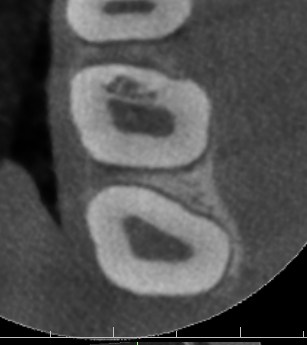I’m often asked in lectures how EICRR happens…
I’ve always explained (as we’re informed by the literature) that it starts through a small disruption within a singular dentin tubule and tracks inwards towards the pulp but stays circumferential around the pulp
But many of my scans don’t show this, on the singular scale…..
I was thrilled to review this recent scan which may be the best showcase-to-date of this singular tubule track of destruction towards the pulp.
*likely more than 1 single tubule but my point is that the path inwards is very very small, and often cannot be appreciated on the tiny scale – even on CBCT. Happy that this scan shows such a tiny track inwards.
This is EICRR!
